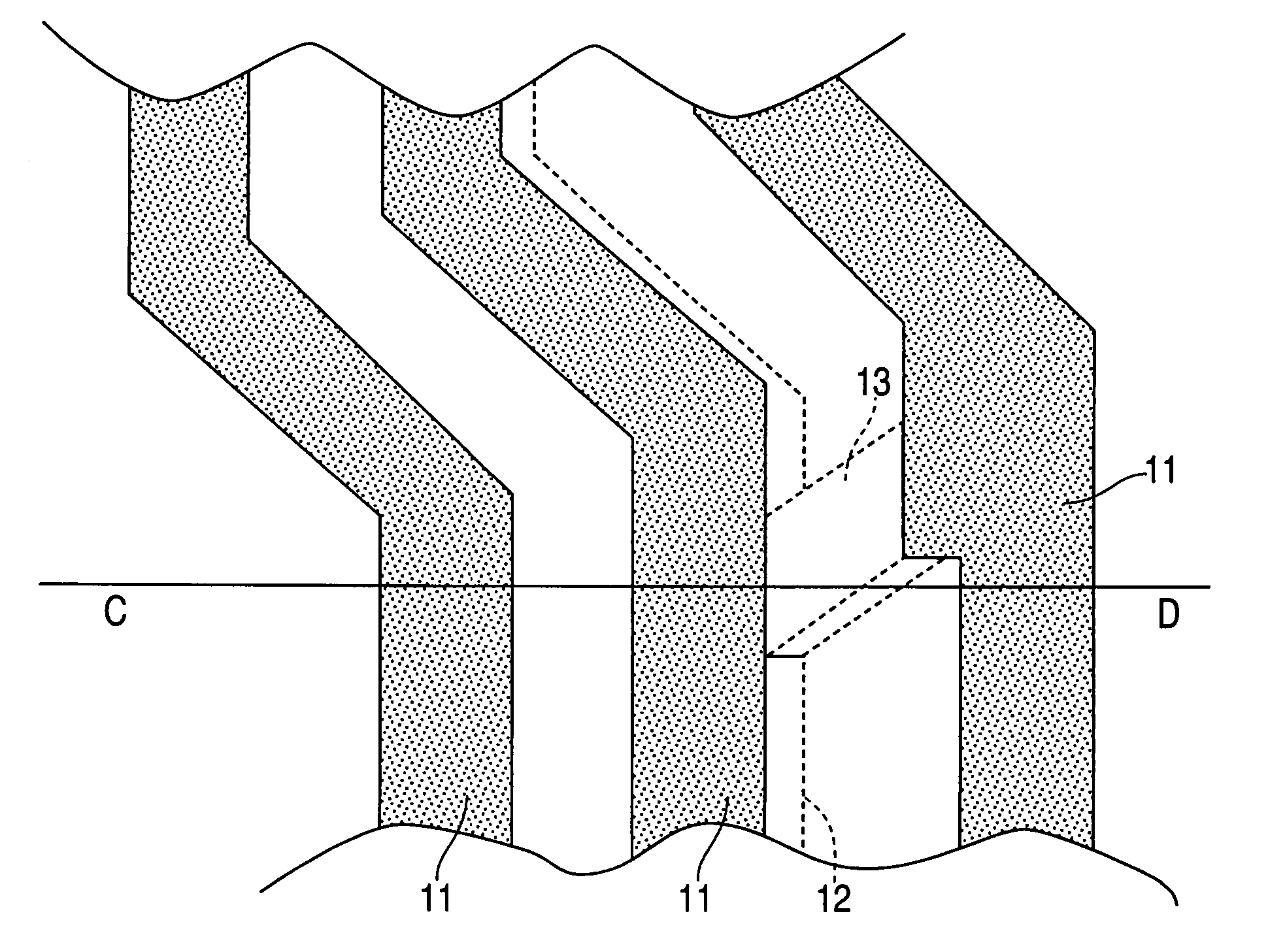Multilayer interconnection structure and method for forming the same
a multi-layer interconnection and structure technology, applied in semiconductor devices, semiconductor/solid-state device details, electrical devices, etc., can solve the problems of signal delay, inability to increase the interconnection density, and the above-described multi-layer interconnection is formed in a lattice pattern, so as to facilitate the formation of the multi-layer interconnection structure. , the effect of easy formation
- Summary
- Abstract
- Description
- Claims
- Application Information
AI Technical Summary
Benefits of technology
Problems solved by technology
Method used
Image
Examples
first embodiment
(Multilayer Interconnection Structure Comprising Lower and Upper Interconnection Layers Connected by Connecting Interconnection Including Interconnection Along a Body Diagonal)
[0040] As shown in FIG. 1, a conventional multilayer interconnection structure comprises a lower interconnection layer 2, an upper interconnection layer 1, connecting interconnection 3, interlayer insulation layers 4 and 5, and an insulation layer 6. In the conventional multilayer interconnection structure, the upper and lower interconnection layers 1 and 2 are connected by the following structure. First, it is necessary to provide the connecting interconnection 3 which vertically extends from the upper interconnection layer 1. Next, in order to connect the lower interconnection layer 2 to the connecting interconnection 3 vertically extending from the upper interconnection layer 1, the lower interconnection layer 2 is required to have a line extending to the point of connection with the connecting interconne...
second embodiment
(Method 1 for Forming the Multilayer Interconnection Structure of the First Embodiment: Forming the Connecting Interconnection Including Interconnection Along the Body Diagonal After Forming Lower and Upper Interconnection Layers)
[0062] In the second embodiment, a first method for forming the multilayer interconnection (or wiring) structure of the first embodiment is described with reference to FIGS. 6A to 6F.
[0063] As shown in FIG. 6A, a step of forming a lower interconnection layer 20 is performed by a so-called damascene process as described below. First, a silicon oxide (SiO2) insulation layer 21 is deposited on a semiconductor substrate. Next, photoresist is coated on the insulation layer 21 and patterned for forming a groove for the lower interconnection layer 20. Next, the silicon oxide (SiO2) insulation layer 21 is etched by reactive ion etching to form the groove for the lower interconnection layer 20, and then the photoresist is removed. Next, a tantalum (Ta) layer is d...
third embodiment
(Method 2 for Forming the Multilayer Interconnection Structure of the First Embodiment: Forming the Connecting Interconnection Including Interconnection Along the Body Diagonal After Forming the Lower and Upper Interconnection Layers)
[0071] In a third embodiment, a second method for forming the multilayer interconnection (or wiring) structure of the first embodiment is described with reference to FIGS. 7A to 7H.
[0072] First, in order to form a lower interconnection layer 35 by a so-called damascene process as shown in FIG. 7A, an insulation layer 36 is deposited on a semiconductor substrate. Then, the lower interconnection layer 35 is formed by the same step as shown in FIG. 6A.
[0073] Next, as shown in FIG. 7B, in order to form an interlayer insulation layer, a first silicon nitride (SiN) layer 38 and a first silicon oxide (SiO2) layer 37 are deposited in that order.
[0074] Next, as shown in FIG. 7C, in order to form inclined surfaces in the first silicon oxide (SiO2) layer 37, ...
PUM
 Login to View More
Login to View More Abstract
Description
Claims
Application Information
 Login to View More
Login to View More - R&D
- Intellectual Property
- Life Sciences
- Materials
- Tech Scout
- Unparalleled Data Quality
- Higher Quality Content
- 60% Fewer Hallucinations
Browse by: Latest US Patents, China's latest patents, Technical Efficacy Thesaurus, Application Domain, Technology Topic, Popular Technical Reports.
© 2025 PatSnap. All rights reserved.Legal|Privacy policy|Modern Slavery Act Transparency Statement|Sitemap|About US| Contact US: help@patsnap.com



